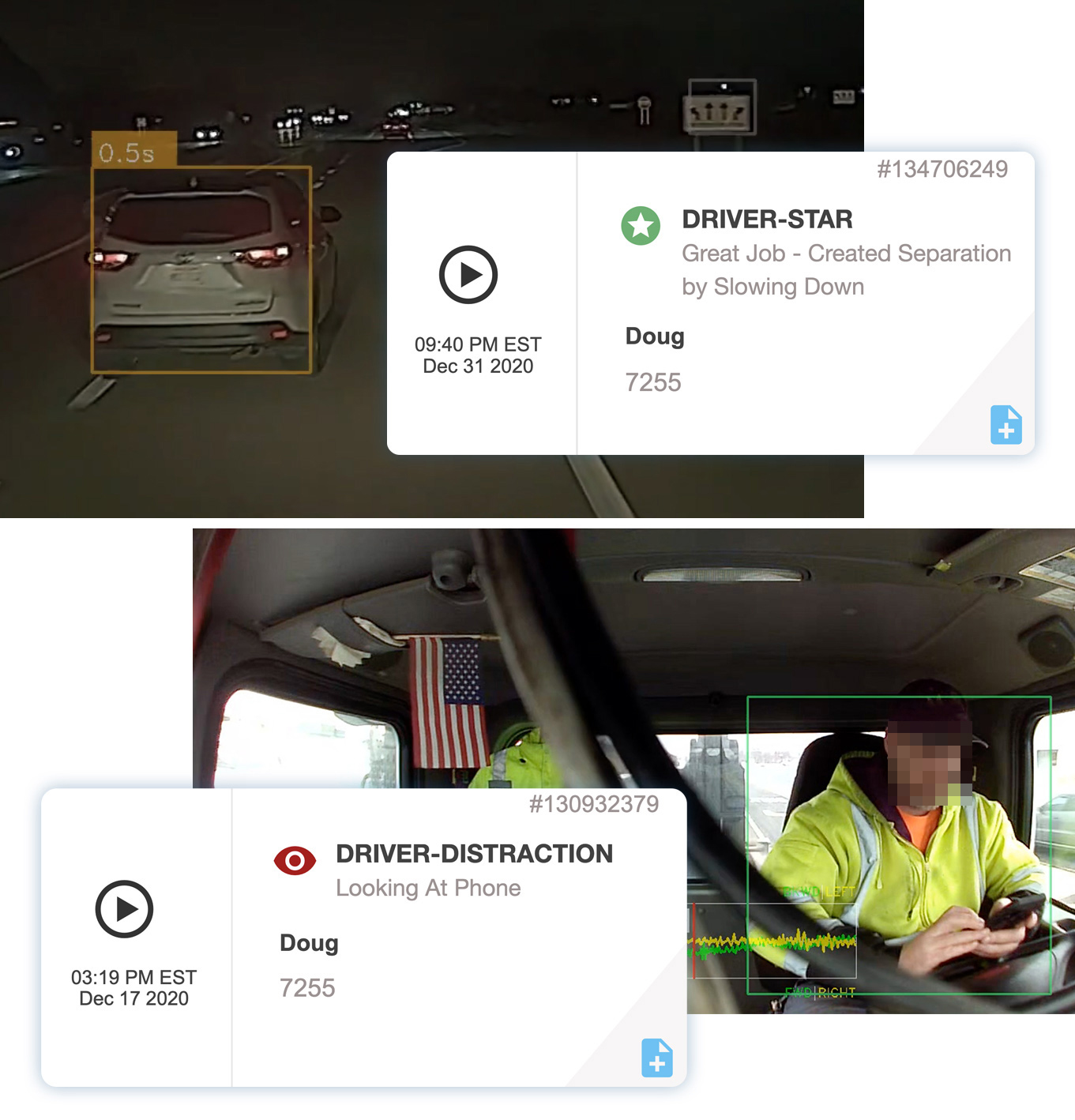
Driver Coaching: 4 Smart Steps to a Successful Safety Program
Driver coaching is a relatively new concept for commercial and government vehicle fleets. It’s only in the past decade or so that fleet managers have had enough insights to understand driver habits. That coincides with more and more fleet vehicles being equipped with GPS tracking.
Now with in-vehicle cameras – aka dash cams or in-cab cameras, with some of the upper-end models being called “smart cameras” – on the rise, coaching drivers is going to be more important than ever. That’s because insurance rates are climbing, and every fleet manager wants to control every cost possible. Combining GPS tracking, in-cab cameras, and coaching is a recipe for preventing accidents rather than simply reacting to them. That’s the best way to controlling insurance costs and losses related to potential lawsuits.
Evaluating the insights from these devices and giving drivers fact-based feedback is the key to safer fleets. Here are some tips for implementing a coaching program for your organization.

Getting Started
Any successful coaching program involves some serious groundwork that culminates in a successful rollout to drivers. You may have heard that some drivers aren’t thrilled about dash cams, especially the driver-facing cameras.
At this step, everything you do should ease their concerns. That means selecting the right equipment, creating a policy that covers using dash cams and telematics, benchmarking their performance, and showing how dash cams will ultimately help them.
Selecting the right equipment is critical: A dash cam should make your life easier, not add to your workload. Many of the lower-tier cameras require manual review of the footage, and you’ll really only be able to see major events. More-sophisticated AI models will automatically detect dangerous behaviors – and some will also be able to detect good driving habits (which can lead to recognizing and rewarding drivers).
The other steps are building blocks that will ensure buy-in and ultimately position your organization for a successful safety and coaching program.

Critical Driver Coaching Measurements for Benchmarking
GPS tracking and a camera will give you enough data to better understand your drivers and their habits. But which ones should you measure for a safer fleet? Here are a few thoughts.
Speed
It’s no surprise that speed is a factor in many accidents. According to the National Highway Traffic Safety Administration, more than a quarter of all traffic fatalities were related to speeding. Most telematics devices will let you set reports that alert you if drivers exceed a certain speed. You can also set thresholds such as 5mph above the posted speed limit. Aside from safety, this is also a smart way to reduce fuel expenses.
Distracted Driving
Distracted driving is another hazard that’s only gotten worse thanks to smartphones. Even when it doesn’t cause any injuries, it’s annoying (think of all the times you’ve gotten stuck behind someone who doesn’t realize the light has turned green). It also makes a bad impression for potential customers to see your drivers texting, eating, or vaping when they should be focused on driving. There’s a caveat to this measurement, though: Not every dash cam can do it.
Running Red Lights or Stop Signs
This behavior, like distracted driving, is only possible with some AI-powered smart cameras. It’s also smart to address this habit: It’s a major source of injuries, and you can bet that your insurance rates will take a hit if one of your drivers is cited for a red-light offense. The right smart camera solution will inform you of this habit, and allow you to address it during driver coaching sessions.
Following Distance
Tailgating is OK before a big football game. But on the road, it’s one of the most-dangerous driving habits. Experts recommend at least a three-second gap between vehicles traveling in the same direction. Clearly, there are many people ignoring this advice: The NHTSA found that about 33-percent of accidents are rear-end impact. On the plus side, there are less likely to be fatal. But that doesn’t mean your insurance provider won’t increase your rates. That’s why it’s wise to make this a key factor in your driving coaching benchmarks.
These are just a few examples of behaviors you can address through driver coaching. Your organization may have its own challenges – proof of service, idle time, or time spent on the job site, for example. It’s possible to address these with telematics and smart cameras, too.
Setting Goals for Improvement
Once you have a solid idea of your drivers’ habits, you can then set realistic goals for improvement. With the right telematics and smart cameras in place, improvement can happen swiftly. Still, it’s best to take a slow-and-steady approach rather than expecting dramatic overnight improvement.
It’s also critical to make recognition and rewards part of coaching your drivers. Give lower-performing drivers a chance to improve by modeling behavior from your safest drivers.
And if your telematics and dash cams help exonerate a driver, be sure to share that with the team. It’s excellent proof of how they can benefit from your driver coaching program.

Make Driver Coaching Part of Your Culture
Imagine that you’ve been coaching your drivers for a while, and they’ve hit every possible milestone comfortably. What then?
It’s easy to assume it’s “mission accomplished.” But you’ll likely have new members on the team.
It’s also possible that some employees have gotten comfortable with the telematics and cameras, which could lead them to slip back into their old habits.
If you are consistent with coaching sessions, you can prevent this. Regular review and discussion will keep safety on their mind. This is another reason to recognize and reward – they’ll see that a focus on safety can have tangible benefits to their career.
Need more information about driver safety? Check our Complete Guide to In-Cab Cameras for related content!
Get a Price Quote
Ready to see how the Driveri fleet safety system can work for your fleet?





